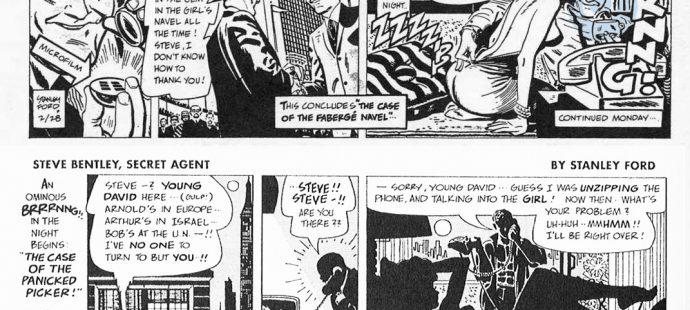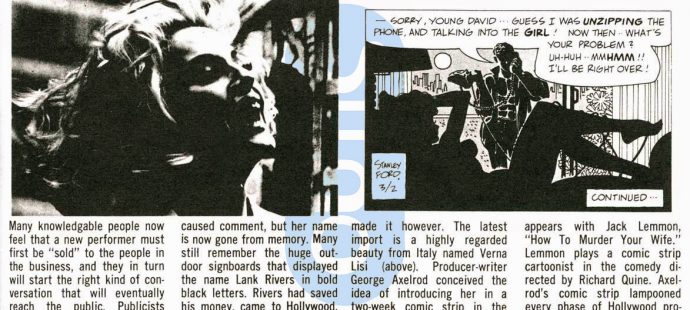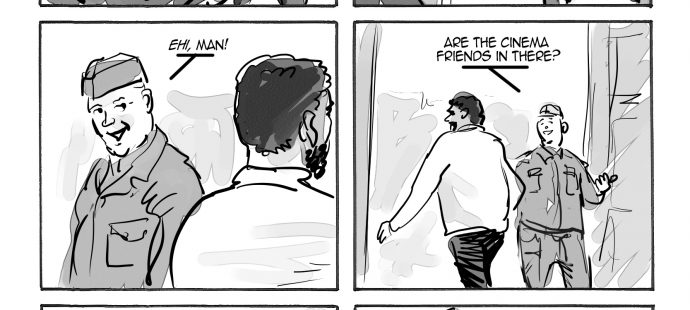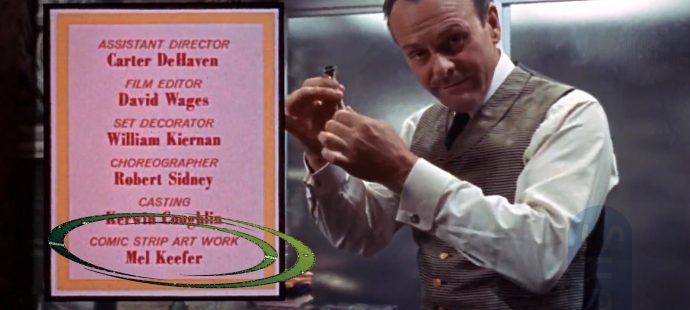
Steve Bentley Secret Agent by Stanley Ford -01
Steve Bentley Secret Agent by Stanley Ford -01 Published weekly from Monday to Friday for two and a half weeks, from Wednesday February 27, 1964 to Friday March 13, 1964, ...

Steve Bentley Secret Agent by Stanley Ford -01 Published weekly from Monday to Friday for two and a half weeks, from Wednesday February 27, 1964 to Friday March 13, 1964, ...

Virni Lisi a fumetti A metà anni ’60 Hollywood cercava disperatamente una nuova Marilyn Monroe. Chiamò Virna Lisi, una bellezza da dea dell’Olimpo, per imporla al pubblico americano. Per lei ...

The Strange World of Ms Xtina

Adam‘s Rome Open City War & Love episode 63 Rome, Open City (Italian: Roma città aperta, also released as Open City) is a 1945 Italian neorealist war drama film directed ...

il film preferito dai “fumettari” How to Murder Your Wife Directed by Richard Quine Written by George Axelrod Starring: Virna Lisi, Jack Lemmon, Terry-Thomas, Claire Trevor, Eddie Mayehoff Music by ...